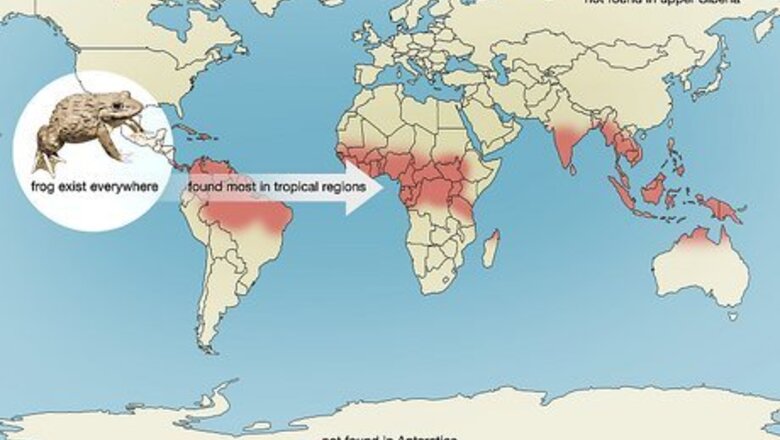
views
Knowing Where to Look
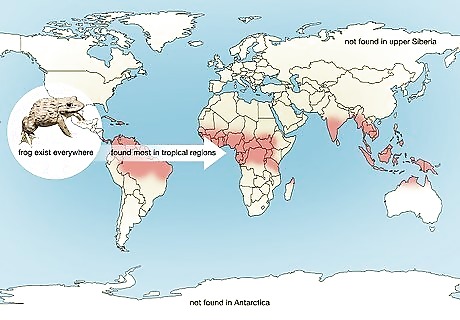
Make sure you’re in the right climate. Except for Antarctica (and some of the colder parts of the world like upper Siberia) frogs exist basically everywhere. They are, however, most numerous in the more tropical regions. In the entire world there are about 4,740 species of frogs. In the United States, for example, there about 90 different species of frog.
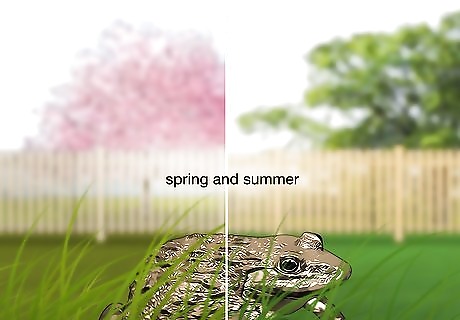
Get out there during spring and summer. You want to make sure you're looking for frogs in the right season. They're most active in spring and summer, because this is when they're looking for food and spawning. In autumn the frogs tend to be trying to settle down for the colder months and for winter they usually bury themselves somewhere protected (like beneath a log) or beneath the mud at the bottom of a pond.
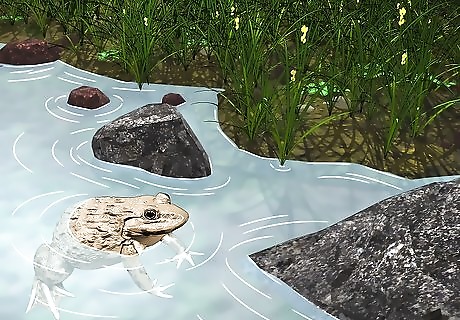
Find an area with water in it. Frogs take in water through their skin, so they need water around in order to keep from drying out. The water should have little to no current and should preferably be somewhat protected. Good places to check for frogs are: swampland, watersheds, or along the banks of streams, lakes, and ponds.

Check for potential food sources. When you do go out looking for frogs, go to an area that has lots of insects, earthworms, minnows, and spiders. These are the types of food that frogs like to eat.
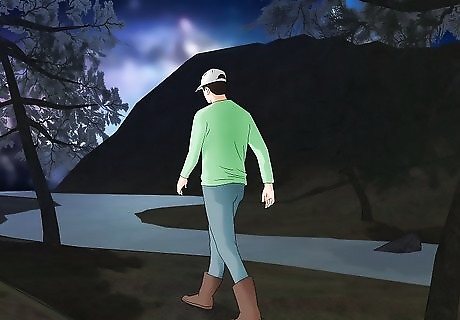
Get out there at night. Frogs tend to be more active at night than they are during the day. This is when they get out and hop around looking for food or for a mate. Usually when it's day they hide and wait until the sun's heat and light has passed on by. Be careful when you're hunting frogs at night, especially if it's in a more isolated area. Bring a flashlight and check out the area sometime during the day before you go that night, so that you can make a note of any potential dangers or problems.
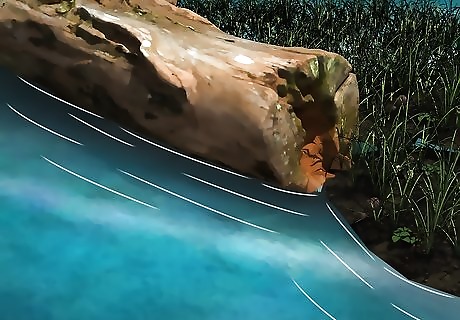
Gently check objects that serve as hiding places. You do not want to scare or injure the frog. Frog species are already disappearing at a rapid rate due to changes in their habitats and encroachment by humans. Check beneath decaying logs, in bushes, and even in piles of leaves.
Catching a Frog
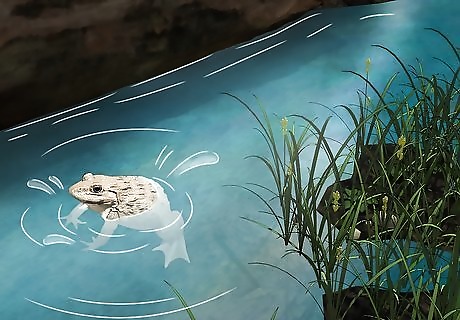
Listen for splashes in the water. When you approach an area where frogs are living they will be likely alerted to your presence and will try to hide. They may hop into the water, alerting you to the fact that there are frogs. Not all splashes in the water are going to be frogs, however. They could also be fish, or even snakes, so make sure that you're paying attention.
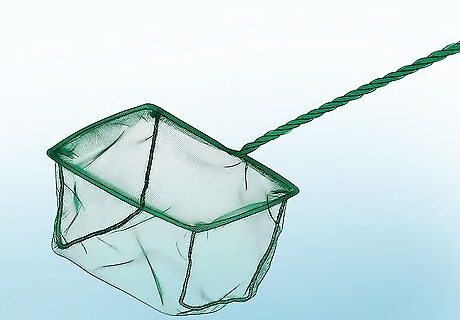
Use a small mesh net. The holes in the net must be small enough so that your frog can't fit their head through them. Frogs can injure themselves if they stick a leg or their head through a hole and get stuck. Make sure that the mouth of your net is big enough to cover the frog. Otherwise you might bring down the sides of the net on some vulnerable part of the frog. Avoid using a butterfly net to try to catch a frog. They are built for more delicate and fragile creatures and will be too flimsy to contain the frog.

Catch the frog with the net. Once you've found your frog and you want to catch it, you have to make a plan based on whether the frog is positioned on the ground or in the water. If it's on the ground you'll need to bring the net down over its body. If it's in the water, you'll need to position the net under it and scoop it out of the water. If you've trapped it in the net on the ground, you want to put your hands gently around the frog's back and legs. You want to be holding onto the frog's hips, with its legs pointing out behind. In this position you can lift the frog and cradle it in your hand, while it's still in the netting. If you're scooped it out of the water, you'll need to grab it gently by its hips with its legs pointing out behind it.
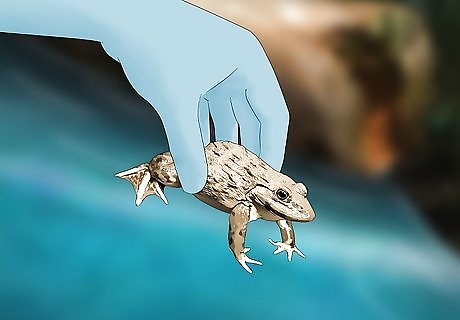
Use your hands to catch the frog. If you're using your hands, you want to lower your hand without the frog noticing (this means slowly and quietly). Gently grab onto the hips and the back legs of the frog, so that it can't escape. Avoid squeezing the frog hard. You hand just enough pressure so it can't escape, but too much pressure can hurt the frog.
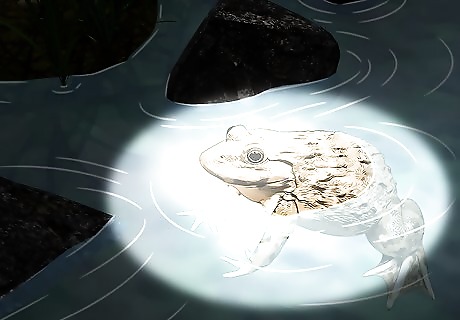
At night, spotlight the frog. Shining a bright light at a frog in the middle of the night will cause the frog to freeze, making it easier for you to catch it. Using a flashlight will also help you locate the frog at night, because the beam of the flashlight will reflect off their eyes.
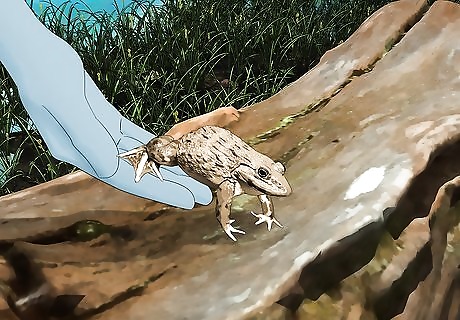
Gently return the frog to its environment. Unless you have a permit for gigging (hunting) them, you need to return the frog to where you found it. Some frogs are protected as endangered species, so make sure that you check regulations concerning the frogs in your area. If you want a frog as a pet it is best to get one from a licensed pet store and raise it from a tadpole.
Enticing Frogs into Your Yard

Landscape naturally. The more you can landscape naturally in the environment that you live in, the more likely you are to attract frogs into your very own yard. You don't even need to have lots of space to do so. Plant native forbs, shrubs, and trees to provide foliage, nectar, pollen, berries, seeds and nuts that wildlife need to survive on. Frogs are considered a good indicator of the health of an ecosystem so by attracting other animals, you'll also attract frogs. Make sure that there is good cover for animals, especially for frogs. Cover can be things like: native vegetation, shrubs, thickets and brush piles, or even the logs of dead trees.
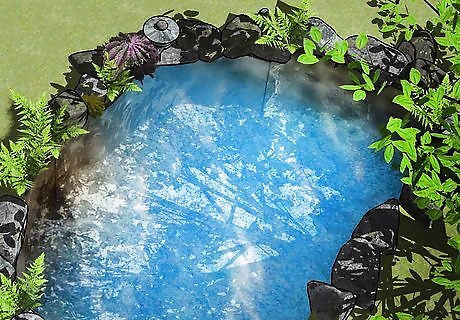
Create a pond. Water is necessary for a frog to survive. By building a natural-seeming pond in your backyard you can entice frogs to come and stay. The size of your pond depends on how much space you have. Obviously it isn't possible for everyone to create a pond in their backyard, but you can create a water source out of a low, wide trough, or pot used for planting. If you are going to construct a pond you'll need to consider things like how deep it needs to be (if your area freezes, for example, it may need to be deeper to keep things alive throughout winter), how to keep the algae in check (barley straw is a good natural way to eliminate algae). You want your pond to resemble a natural pond, as much as possible. This means native plants, debris settling on the bottom of the pond, perhaps even a log or branch floating on the surface. A pond like this will balance itself naturally with minimal seasonal algae growth.
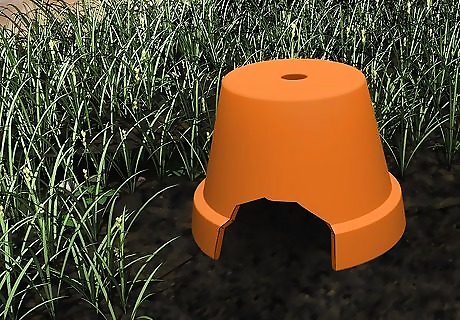
Construct a toad abode. This is basically a little ceramic house for a toad or frog. You can easily create one yourself by turning a ceramic flowerpot upside down. Create a crack or hole in one side to act as an entrance. Or you can prop it up on a rock so your frog can get in and out. Keep it in a shady spot that's close to a water source (a pond, or even a largish saucer of water).
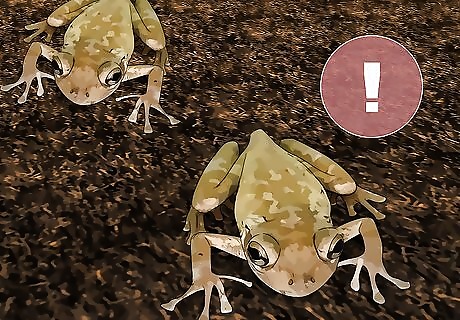
Watch out for invasive frog species. Keep updated on the kinds of frogs that are native to your area. Invasive frog species, such as the Cuban tree frog taking over in Florida, can eat native frogs, as well as competing with them for food and territory.



















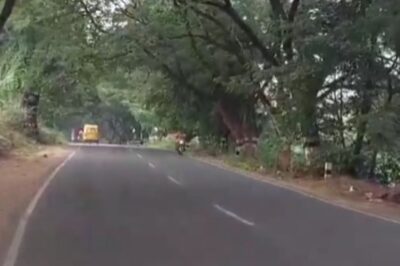
Comments
0 comment